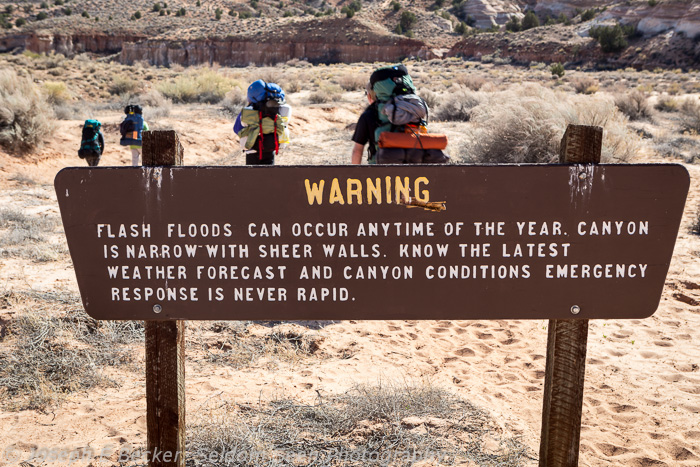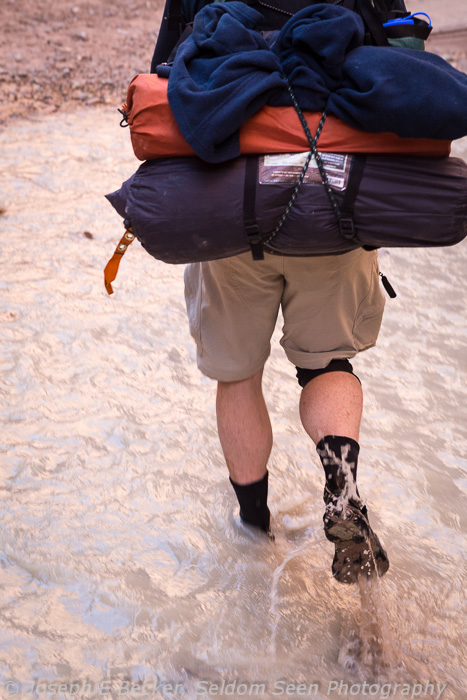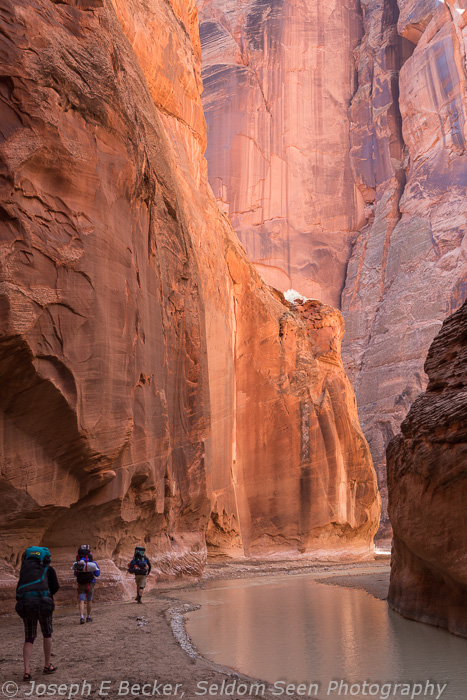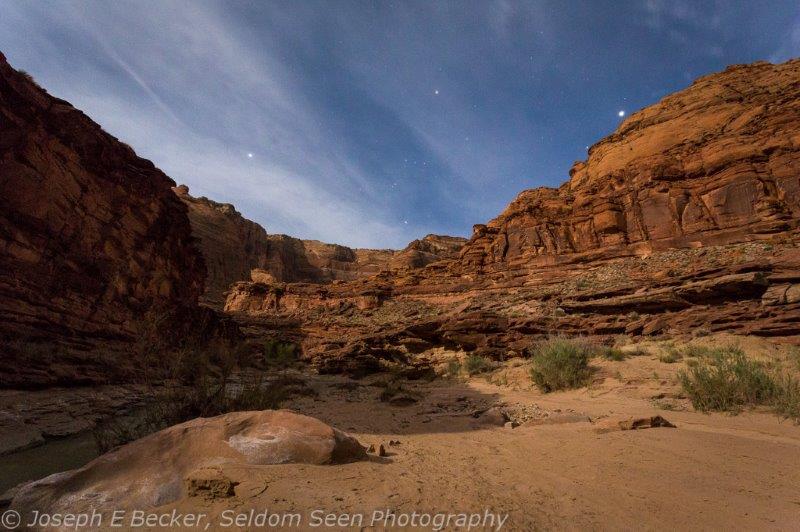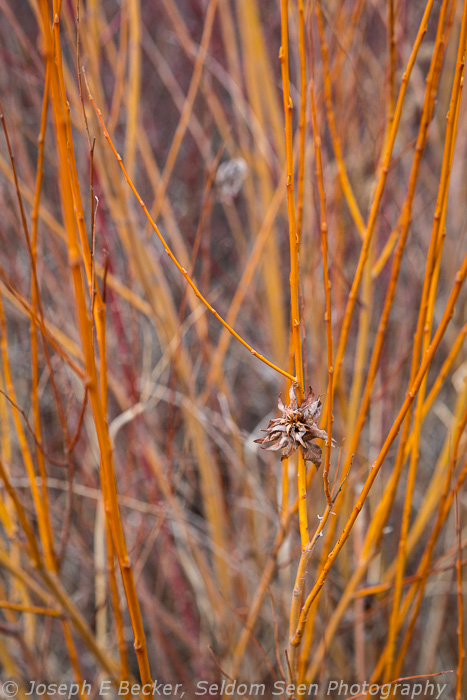The Scoop on Poop and other Paria Facts
Here are some more details about the Paria Canyon hike along with some more photos.
There are four trailheads: three starting trailheads (assuming hiking downstream), all in Utah: Wire Pass, Buckskin Gulch, and Whitehouse campground; and one ending trailhead, at Lee’s Ferry, AZ. My hiking buddies (Rob Tubbs, an friend from grad school; his wife, Deanna; and daughter, Abby; and my brother Rob) and I choose to start at the Whitehouse trailhead because there were better camping options on this route (there are no places to camp in Wire Pass and very few in Buckskin Gulch). The Whitehouse trailhead is on the Paria River, two miles south of the Paria Contact Station on US Highway 89, roughly mid-way between Page, AZ and Kanab, UT. The Buckskin Gulch and Wire Pass trailheads are south of US 89 on House Rock Road. Roads to all the trailheads, at the time of this writing, were passable by passenger car.
Buckskin Gulch is a tributary to the Paria River, and hits the Paria 7 miles from the Whitehouse trailhead. Wire Pass is a tributary to Buckskin Gulch, and is relatively short. Hiking Wire Pass cuts off a portion of Buckskin Gulch.In addition to the hike to Lee’s Ferry, it is also a popular hike to start at Wire Pass or Buckskin, hike to the Paria, then upstream to the Whitehouse trailhead.
Permits: a permit is needed to hike from any of the trailheads, and there is a limit of 20 overnight permits per day. Needless to say, we didn’t see a lot of people on the 6 days we were in the canyon. Permits are also needed for day use, but there is no limit on the number of permits issues. Dogs are allowed, but also need a permit. Permit information can be obtained here.
Shuttle: Unless you want to backtrack back up the canyon, this is a one-way hike. There’s no quick way to drive from the starting trailhead to the end. Unfortunately, the quickest paved route is not currently an option because the highway between Page, AZ and Lee’s Ferry is out for the foreseeable future due to a landslide which took out a portion of the road on February 20th. Now the quickest route involves driving the length of the unpaved House Rock Road. In our case, I followed Rob Tubbs’ Ford F350 truck in my little Hyundai Elantra. Now, while I’m a proponent of the drive-fast-over-washboards-on-dirt-roads method, I’m a piker compared to Rob Tubbs, whom I swear is a teacher at the Drive-As-Fast-As-You-Can-on-Desert-Roads School. There was no way to keep up with him, but we did eventually make the drive. In total, the shuttle took 3.75 hours, with about half the mileage over dirt roads. (Google Maps suggests the round trip over the same roads should take approximately 5.5 hours). It is also possible to leave your cars at one end and hire a shuttle company to do the driving.
Best season: This is definitely not a place to go hiking when it’s raining. The flash flood danger is serious. Plus, as the Paria River drains a large area north of the hike, a thunderstorm miles away can cause a flood in the canyon. August is typically the rainest month of the year here, with May having the least rain; though floods have been recorded in every month of the year. The peak visitation is during April and May – but with the permit system, the canyon is never crowded.
Trail conditions: there is no official trail. Much of the trip is in water. On our hike, I estimate 20% of the trip was walking in the river – mostly in the narrows section. The water was typically ankle-deep, but occasionally knee-deep. Of course, water depths depend on the weather – flash floods occur every year and can be dangerous. It’s best to plan the hike during the dry season (spring). In the lower portion of the canyon, where the canyon opens up, there is an unmaintained overland trail (with many river crossings) which is much easier than walking along the river – which contains many large boulders in this portion of the canyon; these create deeper pools.
A large portion of the hike, when not actually in the water, is on muddy river bank. Quicksand is fairly common, both on the muddy riverbank and in the water itself. It’s not dangerous, but you can sink quickly up to your knees (this happened to me once), and it is difficult to get out of without help. You can avoid quicksand by testing suspect locations with a light foot before putting all your weight on it. Also, when crossing the river, favor rocky spots rather than slow water spots.
Buckskin Gulch is known for having large pools of standing water that sometimes must be waded or swum, as well as one point where boulders block the route. In previous years, these boulders present a problem where some climbing might be necessary. Currently, we found the boulder section, several miles upstream from the confluence with the Paria, was easily passable without scrambling. Report from other hikers who had done the complete length of Buckskin reported no large pools of water either. Of course, this could change with the next rainstorm.
Guidebook: there is a guidebook with maps of all three canyons (Paria, Buckskin, and Wire Pass) available at the Paria Contact Station for $9. This is well worth the money, particularly as it shows the locations of springs. My one complaint about the maps is that they lack north arrows, which can sometimes make it difficult to orient the maps properly (every map is oriented differently, with the river/canyon running lengthwise on the page).
Shoes and clothing: I wore hiking boots with gore tex socks over wool socks. Don’t bother with the gore tex socks – they just filled with water. Most people hike in sandals or tennis/running shoes. I chose hiking boots for the ankle support – but the boots never completely dried out the whole trip. Your feet will get cold. You might consider neoprene socks to help keep them warm.
Even in warm weather, it can be cool in the narrows section of the canyon where there is plenty of shade. This is even more true in Buckskin Gulch where it is rather dark. Take warmer clothes than you would think are necessary based on the weather.
Water: the river water is very silty and will quickly clog a water filter. Luckily there are a number of springs in the canyon where fresh water can be obtain. We drank from these springs without using filtration (do take some care how you fill your bottles if not using a filter). The springs are well marked on the guide maps, but still may be hard to find. We had a particularly hard time finding one called Shower Spring. The boy scout leader we met told us his scout group planned to camp there, yet when we arrived, we saw them hiking off down the canyon. But then, we couldn’t see the spring. We just about gave up looking for it, but as we were running low on water, I gave one last look. I crossed the river and found a hidden trail through tall, thick pampas-type grass, and behold, a big spring with lots of water! The last spring, aptly named Last Reliable Spring, was easier to find, but has a low flow rate so it took time to fill our bottles. The final 12 miles of the hike do not have any reliable water sources. If you plan well, you can minimize the water you have to carry by planning your daily mileage around the spring or by camping near by the springs. Do remember to carry enough water – you’ll need it, even in April or May.
Campsites: there are campsites marked on the map, but many other campsites are available – just be sure to camp high enough above the river in case the water comes up overnight. Within the narrows section of the canyon, campsites are much harder to find. And in the full 18 miles of Buckskin Gulch, there are only a couple, including the one we stayed at our second night, shortly up canyon from Buckskin’s confluence with the Paria.
The Scoop on Poop: When you check in at the Paria Contact Station, you will be given human-waste disposal bags. These consist of one or two silver bags with some dry chemicals in them. These bags open up to rear-end size. And a yellow mesh bag to carry the used silver bags. The ranger writes your permit number on the silver bags, so if perchance you leave one in the canyon, they will make you come and get it (okay, they’d probably give you a fine; she said they started putting numbers on the bags after some hikers started leaving the used bags in the canyon thinking the rangers came through and picked them up). Luckily, you are only required to use these bags within the narrows section of the canyon. Elsewhere, you can dig “cat holes” away from the river and campsites. In our case, we were only in the narrows for about a day and a half. It’s amazing how your body can react when forced with the possibility of using one of these bags. Four of the five of us were able to “hold it” and carried out empty bags. Concerning toilet paper, that comes out with you, even if using cat holes.
Historical sites: portions of the canyon were historically used by Ancient Pueblo people (Anasizi). There are no ruins, at least that we saw, but there are several petroglyph sites (only one of which is marked on the guide map). If you go, the best petroglyph site we saw is between mile 24 and 25. There are several more recent sites as well. These include the remains of an irrigation pump from an ill-fated attempt to pump water out of the canyon in the 1949 at mile 17.5 and a historical ranch property right at the end of the trail in Lee’s Ferry.
Critters: We saw few animals on our hike other than birds, bats, lizards and mice (luckily only at our final campsite), but I did find a scorpion behind my backpack the night we camped in Buckskin Gulch. You should also be aware that rattlesnakes are occasionally seen. Reportedly there are also beavers (we did see some logs they had worked on), coyotes, jack rabbits, cottontail rabbits, ground squirrels, deer and bighorn sheep.
Overall, this is one hike I can highly recommend. The scenery is outstanding. The country is remote, but easily accessible. I waited about 30 years to take this hike – in hind sight, I should have gone a long time ago. It’s one fantastic hike.
Paria!
I’ve been back several days now from my backpacking trip down the Paria River canyon (Paria is pronounced like Maria). We hiked out of the canyon on Thursday. I had hoped to post about the trip earlier, but after driving 900 miles on Friday, going to by sister’s surprise 50th birthday party on Saturday, Easter on Sunday, and with Monday being opening day for the Seattle Mariners (I’m a baseball nut and went to watch the game at Safeco Field on the big screen even though the game was in Oakland), I haven’t had a chance until now.
When people ask about where I went, I say the Paria River – which usually brings a confused look as they have never heard of it. They ask where it is, and I say mostly in the Vermillion Cliffs National Monument – which continues the confused look because they have never heard of it. So then I say, the 38-mile hike ends at where rafting trips through the Grand Canyon start (at Lee’s Ferry, Arizona) and most people then have a general idea.
The Paria River hike is one of the classic hikes in the American Southwest, and I have wanted to do it for over 30 years. Let me tell you, the hike did not disappoint. Much of the hike is through narrows, where the canyon walls are only 5 to 30 meters wide. The hike is considered as a rival to the much more famous Virgin River Narrows hike in Zion National Park.
The first day we got a late start (after having to drive the shuttle, placing a car at Lee’s Ferry to drive back at the end of the hike) only hiked about 3.5 miles, camping before the narrows begins. The narrows begin at about mile 4 and were spectacular. At mile 7, still in the narrows, we turned and went up Buckskin Gulch (a tributary to the Paria). We dropped our packs at one of the only campsites in Buckskin, about 1/4 mile from the confluence with the Paria, and day hiked several miles up Buckskin. That night, we camped where we had left the packs. The following day, we hiked 10 miles down the Paria, leaving the narrows. Though not in the narrows, this section of the canyon was still not wide and still very beautiful. Much of the hiking these three days was in the river itself. The following three days, more and more of the hiking was out of the river, as the canyon widened up. Besides the day hike up Buckskin, we also made the day hike to Wrather Arch – reportedly the largest natural arch in the world outside the state of Utah.
Here’s a few images from the trip. I’ll try to do a more complete blog post on the hike, with more photos, as time allows.
Umtanum Quick Shots

While rain was falling over much of western Washington yesterday, Tanya, Carson and I took a hike in eastern Washington up Umtanum Canyon. It took two hours to drive there from Tacoma, but it was worth it to stretch our legs in a desert canyon. Here’s some quick shots from the trip.
Out of the Smoke and into the Fog
 Seattle, widely known for its rain, has had 0.03 inches of rain so far this September. Combined with no measurable rain in August, we’ve had one of the driest periods on record. Nor is rain falling much elsewhere in Washington State. All month-long there have been forest fires burning in the mountains and eastern Washington, and the smoke is really messing up the air quality. So when I took a day off to go do some photography earlier this month, I decided against going to the mountains which are full of smoke and instead Tanya, Carson and I headed for the beach. We decided to head for Kalaloch and Ruby Beach in Olympic National Park, a 3-hour drive from Tacoma. It’s 156 miles from my house to Kalaloch, and only the last 5 miles is along the ocean. And when making the drive over, it was sunny and the closer to the coast we got, the less smokey the air was. Then, at approximately mile 151 from my house, we entered a fog bank. That’s right, all this sun all over the whole state, and the beaches along the Olympic coast were fogged in. The good news for photography – no boring totally blue skies. The bad news for photography – no great sunset shots either.
Seattle, widely known for its rain, has had 0.03 inches of rain so far this September. Combined with no measurable rain in August, we’ve had one of the driest periods on record. Nor is rain falling much elsewhere in Washington State. All month-long there have been forest fires burning in the mountains and eastern Washington, and the smoke is really messing up the air quality. So when I took a day off to go do some photography earlier this month, I decided against going to the mountains which are full of smoke and instead Tanya, Carson and I headed for the beach. We decided to head for Kalaloch and Ruby Beach in Olympic National Park, a 3-hour drive from Tacoma. It’s 156 miles from my house to Kalaloch, and only the last 5 miles is along the ocean. And when making the drive over, it was sunny and the closer to the coast we got, the less smokey the air was. Then, at approximately mile 151 from my house, we entered a fog bank. That’s right, all this sun all over the whole state, and the beaches along the Olympic coast were fogged in. The good news for photography – no boring totally blue skies. The bad news for photography – no great sunset shots either.
We spent the first part of our trip at Ruby Beach, which has some nice sea stacks and a creek on the beach. The fog made for some interesting compositions, and several other photographers also had their tripods out. We walked north on the beach. The fog closed in around us, and it was if we were alone in the world, just the ocean on one side and a wilderness forest on the other. No sounds but the crashing waves. Hunger eventually drove us back to the car and we headed back down the highway to find a viewpoint where we could eat a picnic dinner with a view, or as much of one as the fog would allow.
It was nearing sunset, and the fog bank started to roll off shore such that it wasn’t actually fogging on the beach, but the fog still blocked the sun. Ever optimistic and still hoping for a good sunset, we stopped in at Beach 4 (which is between Kalaloch and Ruby Beach). No luck on the sunset, but as it was shortly after low time, there were tide pools to explore and starfish to photograph.
All in all, it was a good day, and I didn’t have to worry about forest fire smoke ruining my photographs. Given the choice of smoke or fog, I was happy to have the fog.
Why They Call It Paradise

 Earlier this week, Tanya,, Carson and I went camping for three days at La Wis Wis near White Pass. I took the opportunity to drive up to Paradise in Mount Rainier National Park for one sunset and one sunrise. Though it looked like they were slightly past their prime, the wildflowers were incredible at Paradise. If you want to see them this year, you best get up there fast.
Earlier this week, Tanya,, Carson and I went camping for three days at La Wis Wis near White Pass. I took the opportunity to drive up to Paradise in Mount Rainier National Park for one sunset and one sunrise. Though it looked like they were slightly past their prime, the wildflowers were incredible at Paradise. If you want to see them this year, you best get up there fast.
For my sunset shots, I hiked from the visitor center eastward on the Skyline Trail then partly up the Golden Gate Trail. The flowers were great on the Golden Gate Trail, but the view of Rainier is partially obstructed by a ridge. Luckily for me, the view of the Tatoosh Range to the south put on a good alpenglow show.
The next morning, after arriving at Paradise at 5:45 a.m. (no trouble finding parking at that time!), I headed north on the Skyline Trail to Glacier Vista, then back to the visitor center via the Deadhorse Creek and Waterfall Trails. Again, great flowers, but also more unobstructed views of Rainier (the featured photo above is of Rainier from the Deadhorse Creek Trail). Unfortunately, there wasn’t much color in the sunrise. However, low-lying clouds below Paradise made for some good shots.
Anyway, I just wanted to post a few photos from the trip to show you why they call it Paradise!


